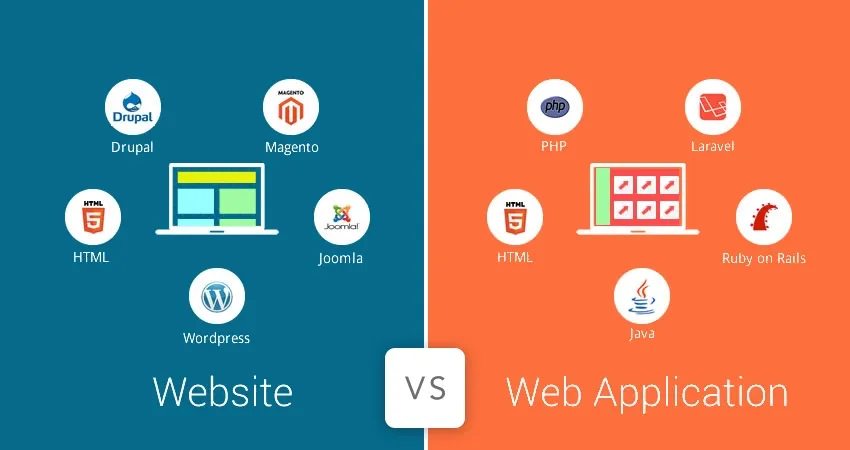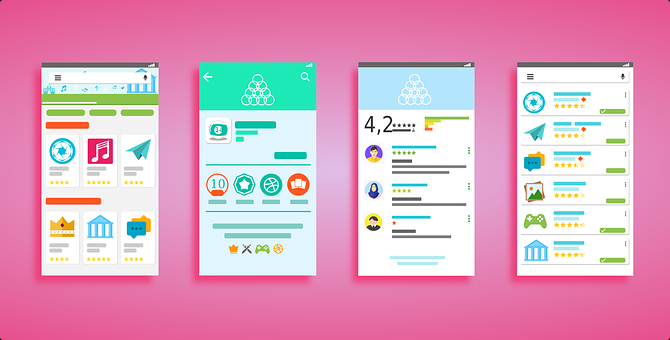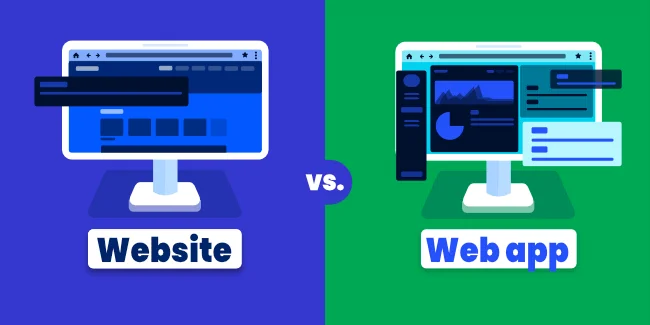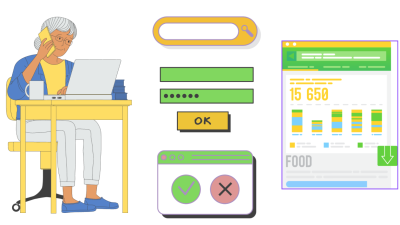Introduction
UX for Web Apps vs. Websites is a critical factor in the success of any digital product. But not all digital products are created equal. While websites and web applications may look similar on the surface, their UX requirements differ significantly. Understanding these differences is essential for designers, developers, and businesses aiming to deliver seamless, intuitive, and effective user experiences.
In this blog, we’ll explore the key distinctions between UX for web apps and websites, the unique challenges each presents, and best practices for designing experiences that meet user expectations and business goals.
1. Defining Websites and Web Apps
What Is a Website?
A website is typically informational. It’s designed to present content—text, images, videos, and links—to users. Examples include:
- Blogs
- News portals
- Company homepages
- Portfolio sites
The primary goal is to inform, educate, or promote.
What Is a Web App?
A web application is interactive. It allows users to perform tasks, manipulate data, and engage with dynamic content. Examples include:
- Email clients (e.g., Gmail)
- Project management tools (e.g., Trello)
- Online banking platforms
- SaaS dashboards
The primary goal is to enable functionality and productivity.
2. UX Goals: Inform vs. Interact
Website UX Goals
- Easy navigation
- Clear content hierarchy
- Fast loading
- Mobile responsiveness
- SEO-friendly design
Web App UX Goals
- Task efficiency
- Data accuracy and feedback
- Intuitive workflows
- Real-time updates
- Error prevention and handling
Web apps require deeper UX thinking because users rely on them to complete specific tasks.
3. Navigation and Information Architecture
Websites
Navigation is often linear or hierarchical. Users browse pages to consume content.
- Menus are simple and static
- Breadcrumbs help users track location
- Search functionality is optional

Web Apps
Navigation is task-oriented and dynamic.
- Menus may change based on user roles
- Dashboards and tabs organize tools
- Search and filtering are essential
Designers must prioritize workflow clarity over content hierarchy.
4. User Interaction and Feedback
Websites
Interactions are minimal—clicking links, watching videos, submitting contact forms.
- Feedback is limited (e.g., form validation)
- Pages reload with each action
Web Apps
Interactions are frequent and complex—drag-and-drop, inline editing, real-time collaboration.
- Feedback must be immediate and contextual
- Use of modals, tooltips, and microinteractions
- AJAX and APIs enable seamless updates
UX must support continuous engagement without overwhelming users.
5. Performance and Responsiveness
Websites
Performance focuses on page load speed and responsiveness across devices.
- Optimized images and caching
- CDN usage for faster delivery
Web Apps
Performance includes real-time data handling and responsiveness to user actions.
- Efficient backend communication
- Loading indicators and skeleton screens
- Error handling and retry mechanisms
Web apps must feel fast and reliable, even under heavy usage.
6. Personalization and User Roles
Websites
Personalization is limited—perhaps based on location or browsing history.
- Cookie-based recommendations
- Language or region-specific content
Web Apps
Personalization is deep and role-based.
- Admins, editors, viewers with different permissions
- Custom dashboards and settings
- Saved preferences and user-specific data
UX must adapt to user context and permissions dynamically.
7. Onboarding and Help Systems
Websites
Onboarding is minimal—users land, browse, and leave.
- Clear CTAs and navigation
- FAQs or help pages
Web Apps
Onboarding is critical—users need to understand functionality.
- Guided tours and tooltips
- Interactive tutorials
- Contextual help and support chat
A poor onboarding experience can lead to user abandonment.

8. Accessibility and Compliance
Both websites and web apps must be accessible, but web apps face more challenges due to complexity.
- Keyboard navigation
- Screen reader compatibility
- ARIA roles and semantic HTML
Web apps must ensure accessibility across dynamic interfaces, which requires rigorous testing.
9. Security and Data Handling
Websites
Security focuses on protecting user data (e.g., contact forms, cookies).
- HTTPS encryption
- GDPR compliance
Web Apps
Security is more complex—handling sensitive data, user authentication, and permissions.
- Role-based access control
- Secure APIs and data validation
- Session management and encryption
UX must balance security with usability, avoiding friction while ensuring safety.
10. Maintenance and Scalability
Websites
Updates are content-driven—new blog posts, SEO tweaks, design refreshes.
- CMS platforms simplify updates
- Static content is easier to manage
Web Apps
Updates are feature-driven—new tools, bug fixes, performance enhancements.
- Requires version control and CI/CD pipelines
- UX must accommodate evolving functionality
Scalability impacts UX—new features must integrate seamlessly.
11. Analytics and User Behavior Tracking
Websites
Analytics focus on traffic, bounce rates, and content engagement.
- Google Analytics, heatmaps
- Conversion tracking
Web Apps
Analytics focus on feature usage, task completion, and user retention.
- Event tracking and funnel analysis
- Session recordings and user flows
UX decisions should be data-informed, especially in web apps.
12. Design Systems and Component Libraries
Web apps benefit more from reusable components due to complexity.
- Design systems ensure consistency
- Component libraries speed up development
Websites may use templates, but web apps need modular, scalable design.

13. Common UX Mistakes in Web Apps vs. Websites
Websites
- Overloading with content
- Poor mobile optimization
- Weak CTAs
Web Apps
- Confusing workflows
- Lack of feedback
- Poor onboarding
Avoiding these mistakes requires platform-specific UX expertise.
14. Case Study Comparison
Website Example: Travel Blog
- Goal: Inspire and inform
- UX Focus: Visual storytelling, easy navigation, fast loading
Web App Example: Travel Booking Platform
- Goal: Enable bookings and itinerary management
- UX Focus: Task efficiency, real-time updates, secure transactions
Same industry, vastly different UX needs.
Conclusion
While websites and web apps may share design principles, their UX requirements diverge significantly. Websites prioritize content delivery and brand presence, while web apps focus on functionality, interaction, and user productivity.
Understanding these differences helps designers and businesses create experiences that not only look good but work well—driving engagement, satisfaction, and conversion.
Whether you’re building a sleek portfolio site or a robust SaaS platform, tailor your UX strategy to the platform’s purpose. The result? Happier users and better business outcomes.





